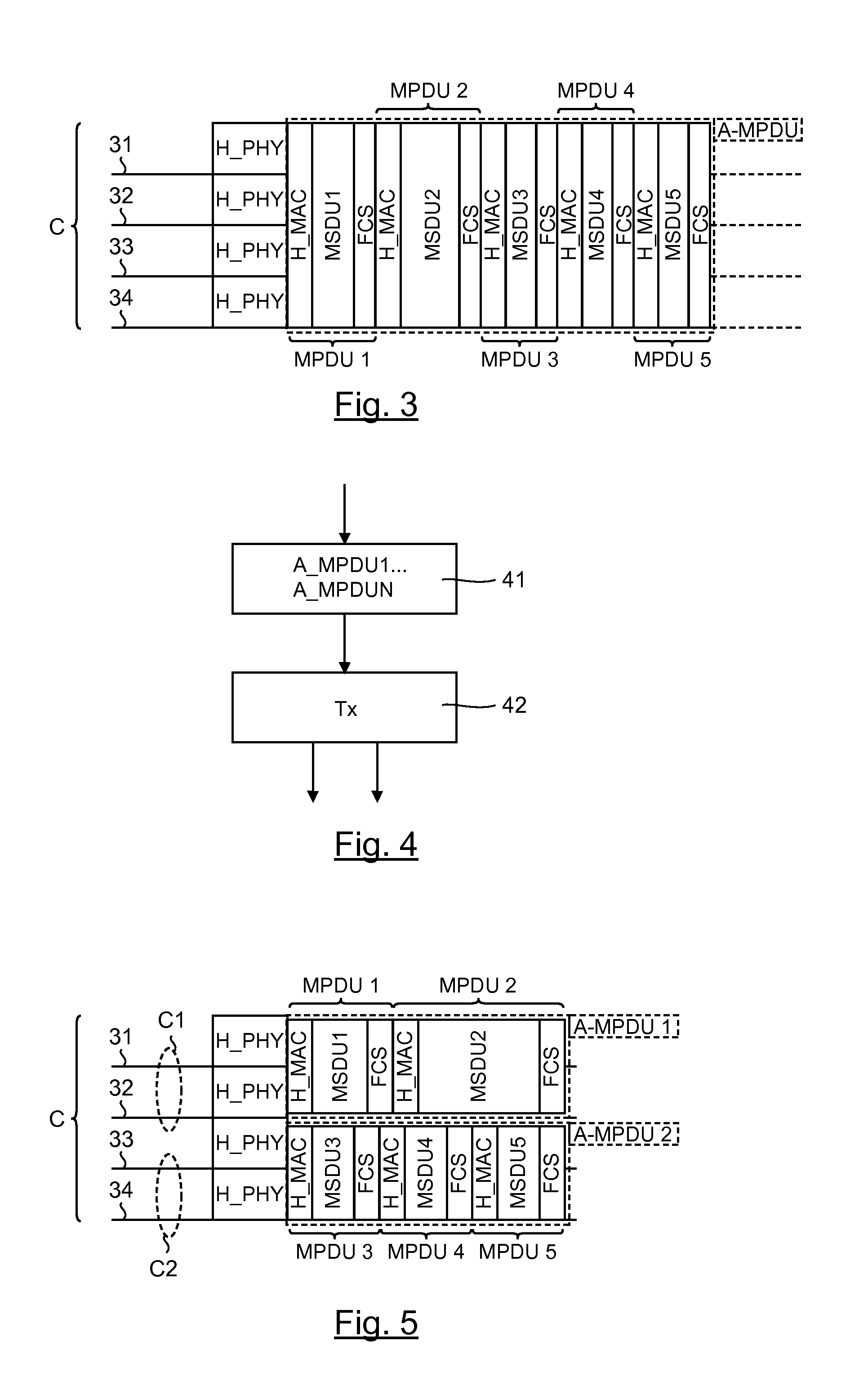Methods for transmitting and receiving data using a plurality of radio channels, transmission and destination devices, corresponding signal and computer program
- Summary
- Abstract
- Description
- Claims
- Application Information
AI Technical Summary
Benefits of technology
Problems solved by technology
Method used
Image
Examples
Embodiment Construction
[0130]1. General Principle
[0131]The general principle of an embodiment of the invention relies on a specific aggregation of the data packets enabling the data to be spread on only one part of the radiofrequency channels forming the concatenated channel. In this way, the data packets are grouped together so that different aggregated packets are sent simultaneously on several concatenated sub-channels, each aggregated packet being sent in a distinct concatenated sub-channel.
[0132]The term “concatenated channel” is understood here to mean a channel corresponding to the concatenation of several radiofrequency channels, used for a multichannel transmission. Such a concatenated channel defines a band for the transmission of data that is wider than a single radiofrequency channel. The term “concatenated sub-channel” is understood to mean a single radiofrequency channel of the concatenated channel or a set of radiofrequency channels of the concatenated channel. It may be recalled that these...
PUM
 Login to View More
Login to View More Abstract
Description
Claims
Application Information
 Login to View More
Login to View More - R&D
- Intellectual Property
- Life Sciences
- Materials
- Tech Scout
- Unparalleled Data Quality
- Higher Quality Content
- 60% Fewer Hallucinations
Browse by: Latest US Patents, China's latest patents, Technical Efficacy Thesaurus, Application Domain, Technology Topic, Popular Technical Reports.
© 2025 PatSnap. All rights reserved.Legal|Privacy policy|Modern Slavery Act Transparency Statement|Sitemap|About US| Contact US: help@patsnap.com



